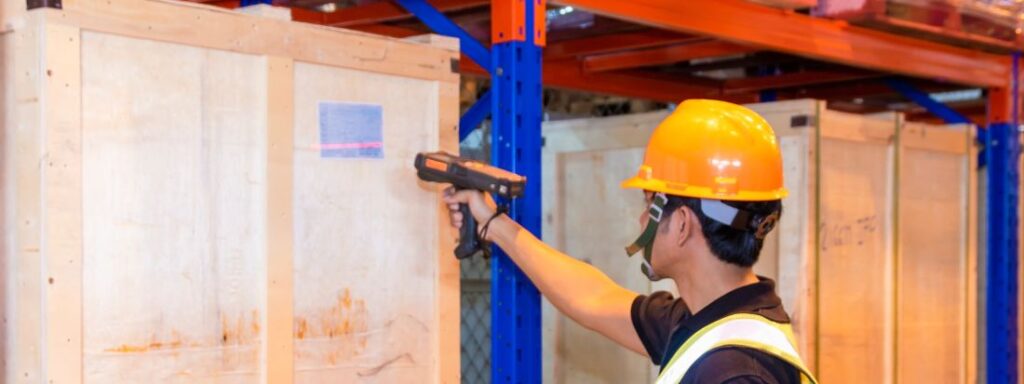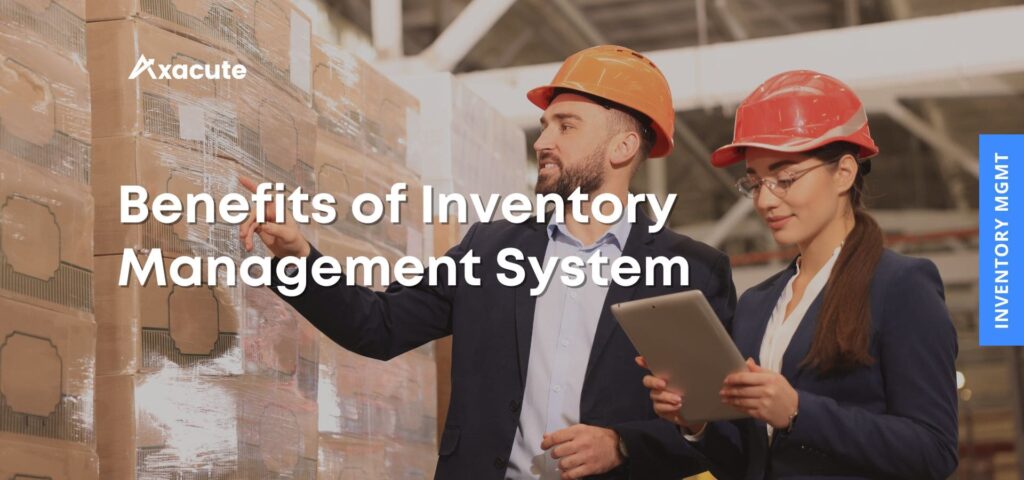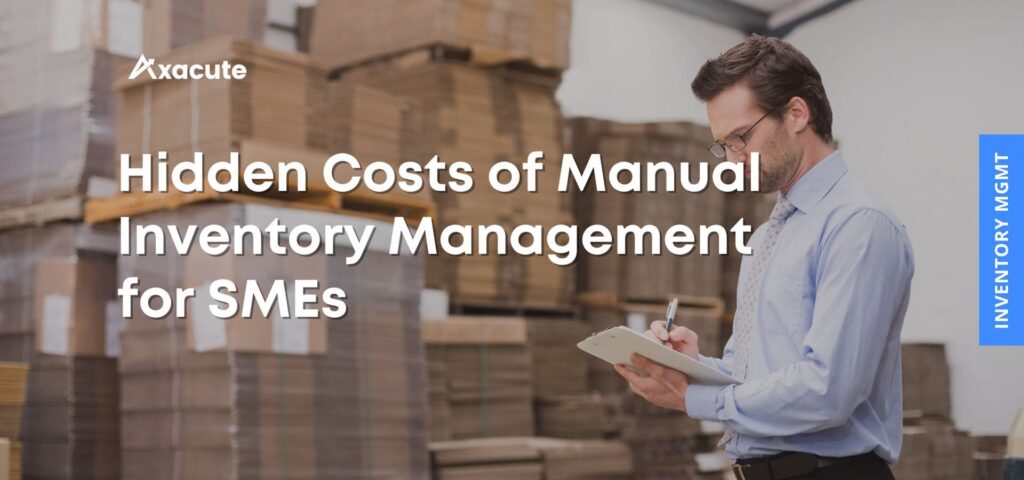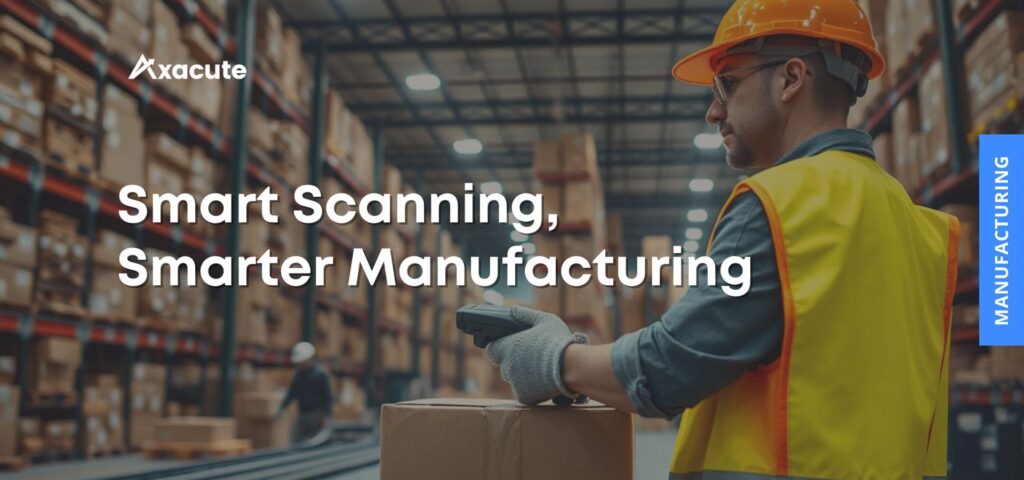Axacute: Pallet Module
v1.6.0 Pallet Module
We are thrilled to announce the release of our latest product update, which includes a brand-new Pallet module that will revolutionize the way you manage your inventory and production processes! With this new feature, you now have greater flexibility and control over your inventory, allowing you to perform transactions such as tracking, receiving, transferring, picking and delivery by Pallets.
What is a Pallet?

A pallet can refer to a pallet, carton, tote, or any other container used to hold goods in a warehouse. Each pallet carries a unique identifier called an LPN (License Plate Number), which tracks a specific unit of goods within the warehouse. However, a pallet does not always represent a single physical entity. Instead, an LPN can also be defined as a collection of items. Furthermore, this feature allows businesses to record pallet movements within the warehouse simply by scanning the LPN with a mobile data collection device.
Benefits of Pallet
1. Better Inventory Tracking and Management
When items arrive at the warehouse as individual units, it can be difficult to keep track of how many are in stock and which have been used or sold. As a result, discrepancies often appear in inventory counts. The Pallet module helps resolve this challenge with minimal effort, since tracking is maintained at the LPN level and linked to a location attribute. A unique LPN barcode is assigned to the pallet during receiving, transfer, or when building a pallet from multiple loose items. Consequently, businesses can manage and track inventory easily across multiple locations, reducing the risk of overstocking or stockouts. Once assigned, the LPN is reusable across all processes and always provides a unique identifier for the associated items and their quantities.
By transferring items between pallets, businesses can ensure inventory is stored in the most efficient way possible. As a result, they reduce the amount of space required while increasing the accuracy of inventory counts. Moreover, by consolidating multiple loose items into a single pallet, they minimize the risk of picking errors and ensure the right items are always available when needed.
Type of companies that will find this feature useful:
Companies that deal with high-volume or fast-moving inventory, where it can be difficult to keep track of every single unit.
2. Improved Operation Efficiency and Accuracy
Another key benefit of using pallets in the warehouse is the significant improvement in accuracy and efficiency. For example, if multiple items from different customer orders need to be delivered to the same customer, you can build a pallet and pick the required items into it. In doing so, you consolidate several individual items into a single unit that can be picked and transported with ease. This not only reduces the number of trips needed to pick items but also lowers the risk of errors and discrepancies in inventory counts.
When it comes time to pick the items on the pallet, scanning the LPN barcode quickly identifies the contents. As a result, the picking process becomes faster and more efficient because there is no need to scan each individual item. This feature is especially useful for high-volume items that are frequently picked, since it allows larger quantities to be handled at once.

In addition, picking from a pallet helps reduce the risk of damage to individual items. By consolidating multiple products into a single unit, businesses minimize the chances of items being dropped or mishandled during the picking process. Consequently, this practice improves overall inventory quality and reduces the likelihood of returns or other customer issues.
Type of companies that will find this feature useful:
Companies that sell a large number of products (High-Volume-High-Mix).
3. Increased Productivity and Cost Savings
By improving accuracy, efficiency, and inventory tracking, the Pallet feature also helps increase productivity and reduce costs. With more accurate inventory counts and faster picking processes, businesses can cut the time and resources needed to manage inventory. As a result, they lower labor costs and boost overall productivity.
Furthermore, an optimized warehouse layout and smarter inventory storage reduce the amount of space required, helping companies save on rent and other overhead expenses. In addition, improved inventory tracking minimizes the risk of overstocking or stockouts, which leads to long-term cost savings and greater profitability.
Conclusion
By improving accuracy, efficiency, and inventory tracking, the Pallet feature also helps increase productivity and reduce costs. With more accurate inventory counts and faster picking processes, businesses can cut the time and resources needed to manage inventory. As a result, they lower labor costs and boost overall productivity.
Furthermore, an optimized warehouse layout and smarter inventory storage reduce the amount of space required, helping companies save on rent and other overhead expenses. In addition, improved inventory tracking minimizes the risk of overstocking or stockouts, which leads to long-term cost savings and greater profitability.
Overall, the Pallet feature provides businesses with greater flexibility, efficiency, and control over inventory and production processes. By improving inventory accuracy, optimizing warehouse layout, simplifying picking and delivery, facilitating inventory transfers, and streamlining production workflows, this feature helps companies save time and reduce costs. Ultimately, it supports stronger productivity and improves the bottom line.
Check out our articles on Pallet Management and Pallet Transaction for further details on the feature and learn how it can benefit your business.
Categories
- Axacute Highlights (3)
- Blog (146)
- Distribution (4)
- Features (5)
- Industry (2)
- Inventory (67)
- Manufacturing (72)
- Production (33)
- Technology (30)
- Warehouse (66)
- Wholesale (2)
Related
Benefits of an Inventory Management System
The Hidden Costs of Manual Inventory Management for SMEs
Improve Inventory Management and Cut Waste with Axacute
Smart Scanning, Smarter Manufacturing
Real-Time Warehouse Alerts: How to Prevent Stockouts
Connect Axacute to Your ERP for Smarter Operations
Intelligent Warehouse Setup
Level up your productivity
Get started with Axacute and improve your business operations.







